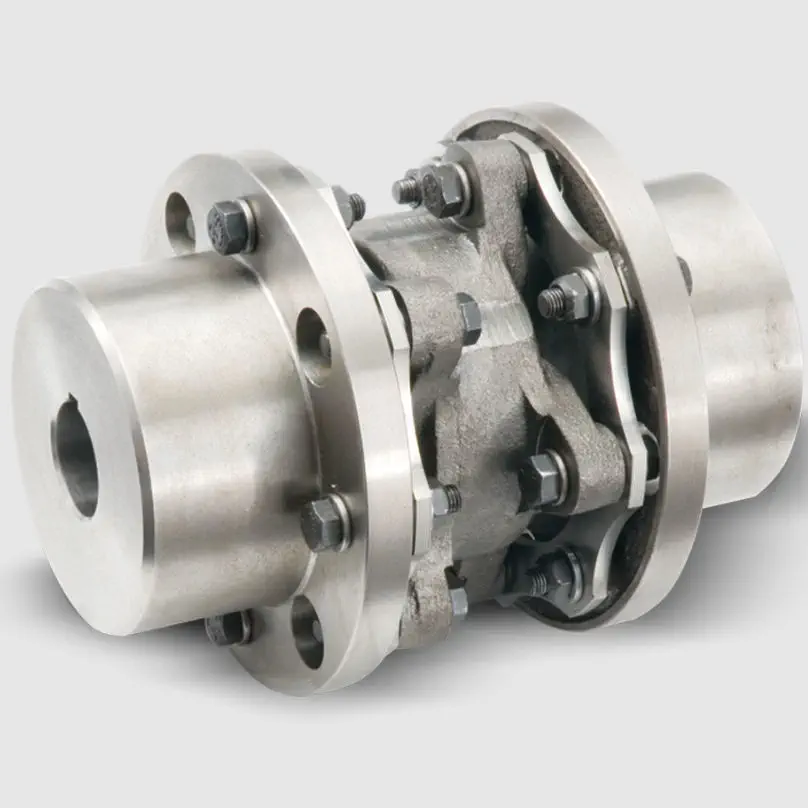Product Description
| Product Name | Metal bellow coupling |
| Material | Aluminum |
| Type | BC16-82 |
| Structure | 1 shaft ( 1 / 1a / 1b ) with bore |
| Bore size | 4-42 mm |
| Weight | About 8-1200G g / pcs |
| packing | plastic bag +paper box +wooden box +wooden pallet |
1. Engineering: machine tools, foundry equipments, conveyors, compressors, painting systems, etc.
2. Pharmaceuticals& Food Processing: pulp mill blowers, conveyor in warehouse, agitators, grain, boiler, bakery machine, labeling machine, robots, etc.
3. Agriculture Industries: cultivator, rice winnower tractor, harvester, rice planter, farm equipment, etc.
4. Texitile Mills: looms, spinning, wrappers, high-speed auto looms, processing machine, twister, carding machine, ruler calendar machine, high speed winder, etc.
5. Printing Machinery: newspaper press, rotary machine, screen printer machine, linotype machine offset printer, etc.
6. Paper Industries: chipper roll grinder, cut off saw, edgers, flotation cell and chips saws, etc.
7. Building Construction Machinery: buffers, elevator floor polisher mixing machine, vibrator, hoists, crusher, etc.
8. Office Equipments: typewriter, plotters, camera, money drive, money sorting machine, data storage equipment, etc.
9. Glass and Plastic Industries: conveyor, carton sealers, grinders, creeper paper manufacturing machine, lintec backing, etc.
10. Home Appliances: vacuum cleaner, laundry machine, icecream machine, sewing machine, kitchen equipments, etc.
/* January 22, 2571 19:08:37 */!function(){function s(e,r){var a,o={};try{e&&e.split(“,”).forEach(function(e,t){e&&(a=e.match(/(.*?):(.*)$/))&&1

Comparison of Disc Couplings with Other Coupling Types
When comparing disc couplings with other coupling types like jaw couplings and elastomeric couplings, several factors come into play:
- Flexibility: Disc couplings offer high flexibility and misalignment compensation, similar to elastomeric couplings, making them suitable for applications with angular, axial, and parallel misalignment.
- Torsional Stiffness: Jaw couplings are known for their high torsional stiffness, which is suitable for precision applications. Disc couplings offer a balance between flexibility and stiffness.
- Misalignment Compensation: Disc couplings excel in accommodating misalignment, whereas elastomeric couplings and jaw couplings are better suited for lower degrees of misalignment.
- Vibration Damping: Elastomeric couplings provide excellent vibration damping due to their rubber elements. Disc couplings can also dampen vibrations to some extent.
- Compactness: Jaw couplings and elastomeric couplings are relatively compact, making them suitable for space-constrained applications. Disc couplings are larger in size but offer higher torque capacity.
- Torque Capacity: Disc couplings generally have higher torque capacity compared to elastomeric couplings and jaw couplings.
- Installation and Maintenance: Disc couplings and elastomeric couplings are typically easier to install and require less maintenance compared to jaw couplings.
- Material Options: All three coupling types are available in various materials, allowing for compatibility with different environments.
The choice between disc couplings, jaw couplings, and elastomeric couplings depends on the specific requirements of the application, including torque, misalignment, vibration, and stiffness considerations. Each coupling type has its strengths, and selecting the right one involves evaluating these factors to achieve optimal performance and reliability.

Unique Construction of Disc Couplings for Vibration Dampening and Resonance Control
The distinctive construction of disc couplings plays a vital role in their ability to dampen vibrations and control resonance:
- Flexible Disc Packs: Disc couplings consist of multiple thin metal discs stacked alternately. These discs are connected to the hub and spacer, creating a flexible structure that can absorb and dissipate vibrations.
- Radial Compliance: The flexible discs allow for radial compliance, enabling the coupling to absorb misalignments and shocks, which helps prevent the transmission of vibrations.
- Torsional Flexibility: The flexible nature of the disc packs provides torsional flexibility, allowing the coupling to absorb torsional vibrations and shocks that may arise from the machinery.
- Resonance Damping: The design of disc couplings helps dampen resonant frequencies. The unique construction disperses energy across the flexible elements, reducing the risk of resonant vibration buildup.
- Material Selection: The choice of materials for the discs plays a role in controlling resonance. The right combination of material properties can help mitigate the effects of resonance.
By efficiently absorbing and dissipating vibrations and controlling resonance, disc couplings contribute to smoother operation, reduced wear and tear on machinery components, and enhanced overall system performance.

Disc Couplings: Function and Application in Mechanical Systems
A disc coupling is a type of flexible coupling used in mechanical systems to connect two shafts while allowing for angular misalignment, axial movement, and some degree of torsional flexibility. It consists of two hubs with flexible metallic discs, known as diaphragms, positioned between them.
Disc couplings are commonly utilized in various industrial applications where precise power transmission, reliability, and flexibility are essential. Some key features and applications of disc couplings include:
- High Torque Transmission: Disc couplings are designed to transmit high torque loads between shafts while maintaining shaft alignment. The flexible diaphragms can accommodate misalignments and prevent torque overloads on connected equipment.
- Angular Misalignment Compensation: The design of disc couplings allows them to handle angular misalignment between shafts, which can occur due to manufacturing tolerances or dynamic conditions.
- Axial Movement Absorption: Disc couplings can absorb limited axial movement along the shaft axis without transferring excessive forces to the connected components.
- Torsional Flexibility: The metallic diaphragms of disc couplings offer torsional flexibility, enabling them to dampen vibrations and shock loads. This helps protect connected equipment from damage and increases overall system reliability.
- Precision Machinery: Disc couplings are often employed in precision machinery and equipment, such as CNC machines, robotics, pumps, compressors, and servo systems. These applications require accurate motion control and reliable power transmission.
- High-Speed Applications: Due to their balanced design and ability to maintain precise alignment, disc couplings are suitable for high-speed applications where even a small misalignment can lead to vibration and wear.
The ability of disc couplings to provide both flexibility and precise torque transmission makes them a preferred choice in various industries, including manufacturing, aerospace, automotive, and more. Proper selection, installation, and maintenance of disc couplings contribute to improved machinery performance, reduced downtime, and extended component life.


editor by CX 2024-04-04